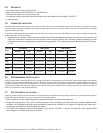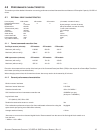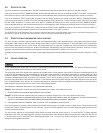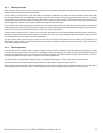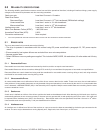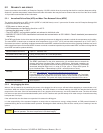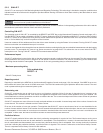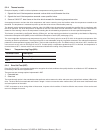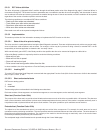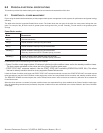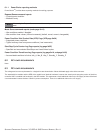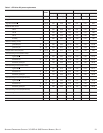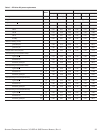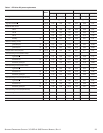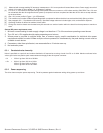SEAGATE ENTERPRISE CAPACITY 3.5 HDD V4 SAS PRODUCT MANUAL, REV. A 17
5.2.5.1 DST failure definition
The drive will present a “diagnostic failed” condition through the self-tests results value of the diagnostic log page if a functional failure is
encountered during DST. The channel and servo parameters are not modified to test the drive more stringently, and the number of retries
are not reduced. All retries and recovery processes are enabled during the test. If data is recoverable, no failure condition will be reported
regardless of the number of retries required to recover the data.
The following conditions are considered DST failure conditions:
• Seek error after retries are exhausted
• Track-follow error after retries are exhausted
• Read error after retries are exhausted
• Write error after retries are exhausted
Recovered errors will not be reported as diagnostic failures.
5.2.5.2 Implementation
This section provides all of the information necessary to implement the DST function on this drive.
5.2.5.2.1 State of the drive prior to testing
The drive must be in a ready state before issuing the Send Diagnostic command. There are multiple reasons why a drive may not be ready,
some of which are valid conditions, and not errors. For example, a drive may be in process of doing a format, or another DST. It is the
responsibility of the host application to determine the “not ready” cause.
While not technically part of DST, a Not Ready condition also qualifies the drive to be returned to Seagate as a failed drive.
A Drive Not Ready condition is reported by the drive under the following conditions:
• Motor will not spin
• Motor will not lock to speed
• Servo will not lock on track
• Drive cannot read configuration tables from the disk
In these conditions, the drive responds to a Test Unit Ready command with an 02/04/00 or 02/04/03 code.
5.2.5.2.2 Invoking DST
To invoke DST, submit the Send Diagnostic command with the appropriate Function Code (001b for the short test or 010b for the extended
test) in bytes 1, bits 5, 6, and 7.
5.2.5.2.3 Short and extended tests
DST has two testing options:
1. short
2. extended
These testing options are described in the following two subsections.
Each test consists of three segments: an electrical test segment, a servo test segment, and a read/verify scan segment.
Short test (Function Code: 001b)
The purpose of the short test is to provide a time-limited test that tests as much of the drive as possible within 120 seconds. The short test
does not scan the entire media surface, but does some fundamental tests and scans portions of the media. A complete read/verify scan is
not performed and only factual failures will report a fault condition. This option provides a quick confidence test of the drive.
Extended test (Function Code: 010b)
The objective of the extended test option is to empirically test critical drive components. For example, the seek tests and on-track
operations test the positioning mechanism. The read operation tests the read head element and the media surface. The write element is
tested through read/write/read operations. The integrity of the media is checked through a read/verify scan of the media. Motor
functionality is tested by default as a part of these tests.
The anticipated length of the Extended test is reported through the Control Mode page.



